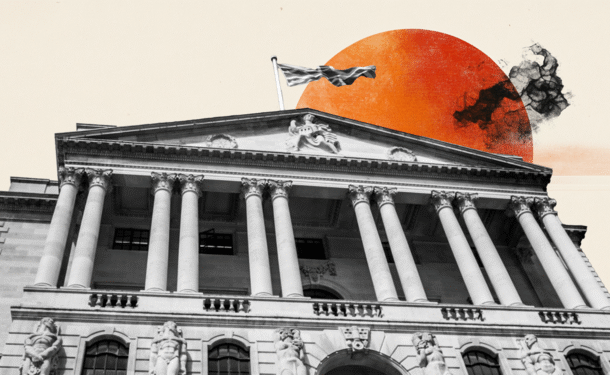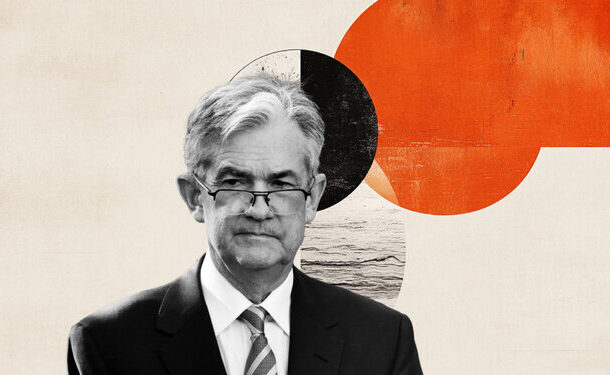
- The Dollar extends gains for the third consecutive day as Middle East tensions escalate.
- The positive impact of higher Oil prices on the CAD remains subdued amid the strong risk-off sentiment.
- Fed Powell’s hawkish remarks provided additional support to the US Dollar.
The USD/CAD advances for the third consecutive day on Thursday and remains steady above 1.3700 at the moment of writing, after having tested the early June highs, near the 1.3730 area earlier today.
The US Dollar is one of the strongest G8 performers on Thursday, as investors rush for safe assets, amid growing fears that the US will strike Iran, bringing the Middle East conflict into a full-blown war of unforeseeable consequences.
Fears of a US strike on Iran are underpinning the USD
US President Donald Trump’s ambiguous comments when questioned whether there were plans to enter the Israel-Iran war unnerved investors on Wednesday, before a news report suggesting that US officials would be preparing a strike on Iran spooked traders further.
Earlier on Wednesday, Iran’s Supreme Leader, Ali Khamenei, refused Trump’s demand of unconditional surrender and warned of “irreparable consequences” if the US involved in a war against the Islamic Republic.
The risk-averse sentiment has pushed the USD/CAD more than 1% higher over the last three days and is offsetting the positive impact of higher Oil prices in the commodity-sensitive CAD for now.
Also on Wednesday, the Federal Reserve left interest rates unchanged and kept hopes of two more rate cuts this year. Chairman Powell dampened optimism later on, warning about inflationary pressures stemming from tariffs in the press release, and provided additional support to the US Dollar.
to 1.3730
Canadian Dollar FAQs
The key factors driving the Canadian Dollar (CAD) are the level of interest rates set by the Bank of Canada (BoC), the price of Oil, Canada’s largest export, the health of its economy, inflation and the Trade Balance, which is the difference between the value of Canada’s exports versus its imports. Other factors include market sentiment – whether investors are taking on more risky assets (risk-on) or seeking safe-havens (risk-off) – with risk-on being CAD-positive. As its largest trading partner, the health of the US economy is also a key factor influencing the Canadian Dollar.
The Bank of Canada (BoC) has a significant influence on the Canadian Dollar by setting the level of interest rates that banks can lend to one another. This influences the level of interest rates for everyone. The main goal of the BoC is to maintain inflation at 1-3% by adjusting interest rates up or down. Relatively higher interest rates tend to be positive for the CAD. The Bank of Canada can also use quantitative easing and tightening to influence credit conditions, with the former CAD-negative and the latter CAD-positive.
The price of Oil is a key factor impacting the value of the Canadian Dollar. Petroleum is Canada’s biggest export, so Oil price tends to have an immediate impact on the CAD value. Generally, if Oil price rises CAD also goes up, as aggregate demand for the currency increases. The opposite is the case if the price of Oil falls. Higher Oil prices also tend to result in a greater likelihood of a positive Trade Balance, which is also supportive of the CAD.
While inflation had always traditionally been thought of as a negative factor for a currency since it lowers the value of money, the opposite has actually been the case in modern times with the relaxation of cross-border capital controls. Higher inflation tends to lead central banks to put up interest rates which attracts more capital inflows from global investors seeking a lucrative place to keep their money. This increases demand for the local currency, which in Canada’s case is the Canadian Dollar.
Macroeconomic data releases gauge the health of the economy and can have an impact on the Canadian Dollar. Indicators such as GDP, Manufacturing and Services PMIs, employment, and consumer sentiment surveys can all influence the direction of the CAD. A strong economy is good for the Canadian Dollar. Not only does it attract more foreign investment but it may encourage the Bank of Canada to put up interest rates, leading to a stronger currency. If economic data is weak, however, the CAD is likely to fall.
Information on these pages contains forward-looking statements that involve risks and uncertainties. Markets and instruments profiled on this page are for informational purposes only and should not in any way come across as a recommendation to buy or sell in these assets. You should do your own thorough research before making any investment decisions. FXStreet does not in any way guarantee that this information is free from mistakes, errors, or material misstatements. It also does not guarantee that this information is of a timely nature. Investing in Open Markets involves a great deal of risk, including the loss of all or a portion of your investment, as well as emotional distress. All risks, losses and costs associated with investing, including total loss of principal, are your responsibility. The views and opinions expressed in this article are those of the authors and do not necessarily reflect the official policy or position of FXStreet nor its advertisers. The author will not be held responsible for information that is found at the end of links posted on this page.
If not otherwise explicitly mentioned in the body of the article, at the time of writing, the author has no position in any stock mentioned in this article and no business relationship with any company mentioned. The author has not received compensation for writing this article, other than from FXStreet.
FXStreet and the author do not provide personalized recommendations. The author makes no representations as to the accuracy, completeness, or suitability of this information. FXStreet and the author will not be liable for any errors, omissions or any losses, injuries or damages arising from this information and its display or use. Errors and omissions excepted.
The author and FXStreet are not registered investment advisors and nothing in this article is intended to be investment advice.
Editors’ Picks

GBP/USD meets firm resistance around 1.3450
GBP/USD trades with a slight positive bias, meeting some resistance around the 1.3450 zone while market participants adjust to the steady hand by the Bank of England (BoE) and the flattish mood surrounding the Greenback.

EUR/USD consolidates around 1.1480, Dollar remains flat
EUR/USD treads water in the sub-1.1500 region on Thursday, always against the backdrop of an equally vacillating US Dollar and reduced volatility in the global markets as investors continue to assess Wednesday’s FOMC event as well as steady escalation in the Middle East conflict.

Gold alternates gains with losses near $3,370
Gold regains traction and set aside an earlier drop to the $3,350 zone per troy ounce on Thursday, now lingering around $3,370 on the back of persistent geopolitical effervescence, thin trading conditions, and a marginal uptick in the US Dollar.

The Best brokers to trade EUR/USD
SPONSORED Discover the top brokers for trading EUR/USD in 2025. Our list features brokers with competitive spreads, fast execution, and powerful platforms. Whether you’re a beginner or an expert, find the right partner to navigate the dynamic Forex market.








